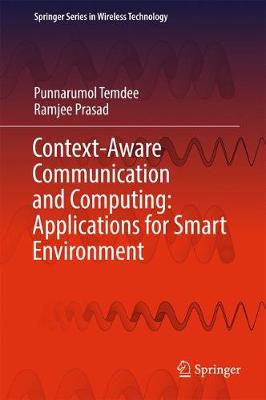Springer Series in Wireless Technology
3 total works
VoIP Technology: Applications and Challenges
by Tamal Chakraborty, Iti Saha Misra, and Ramjee Prasad
This book offers an accessible introduction and practical guide to Voice over Internet Protocol (VoIP) technology, providing readers with the know-how to solve the problems encountered in applying VoIP technology across all types of network. It incorporates the latest research findings and brings readers up to date with the challenges that are faced by researchers developing novel applications of VoIP.
The authors discuss the general architecture of VoIP technology, along with its application and relevance in conventional and emerging wireless communication networks, including Wireless Local Area Networks (WLANs), Worldwide Interoperability for Microwave Access (WiMAX), Long Term Evolution (LTE) and Cognitive Radio Networks. The book also includes Quality of service (QoS) studies under dynamic and unpredictable network conditions, which examine the reliability of both legacy systems And the upcoming pervasive computing systems. Further, it explains how the heuristic-based learning algorithms that are used in VoIP communications may help develop today's technology in the area of autonomous systems.
This book is a valuable source of information for academics and researchers, as it provides state-of-theart research in VoIP technology. It is also of interest to network designers, application architects, and service providers looking for a coherent understanding of VoIP across a wide range of devices, network applications and user categories.
Cyber Security: The Lifeline of Information and Communication Technology
by Ramjee Prasad and Vandana Rohokale
This book discusses a broad range of cyber security issues, addressing global concerns regarding cyber security in the modern era. The growth of Information and Communication Technology (ICT) and the prevalence of mobile devices make cyber security a highly topical and relevant issue. The transition from 4G to 5G mobile communication, while bringing convenience, also means cyber threats are growing exponentially. This book discusses a variety of problems and solutions including:
* Internet of things and Machine to Machine Communication;
* Infected networks such as Botnets;
* Social media and networking;
* Cyber Security for Smart Devices and Smart Grid
* Blockchain Technology and
* Artificial Intelligence for Cyber Security
Given its scope, the book offers a valuable asset for cyber security researchers, as well as industry professionals, academics, and students.
Context-Aware Communication and Computing: Applications for Smart Environment
by Punnarumol Temdee and Ramjee Prasad
This book introduces context-aware computing, providing definitions, categories, characteristics, and context awareness itself and discussing its applications with a particular focus on smart learning environments. It also examines the elements of a context-aware system, including acquisition, modelling, reasoning, and distribution of context. It also reviews applications of context-aware computing - both past and present - to offer readers the knowledge needed to critically analyse how context awareness can be put to use. It is particularly to those new to the subject area who are interested in learning how to develop context-aware computing-oriented applications, as well as postgraduates and researchers in computer engineering, communications engineering related areas of information technology (IT). Further it provides practical know-how for professionals working in IT support and technology, consultants and business decision-makers and those working in the medical, human, and social sciences.


